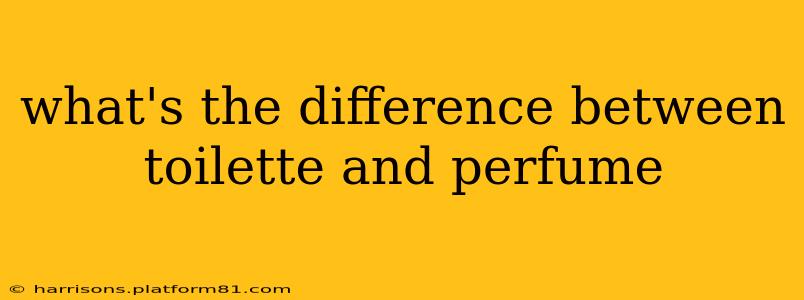What's the Difference Between Toilette and Perfume?
The terms "toilette" and "perfume" often cause confusion, as they both refer to fragrant products. However, the key difference lies in the concentration of aromatic compounds, which directly impacts the scent's longevity, intensity, and price. Understanding these distinctions will help you choose the perfect fragrance for your needs and preferences.
What is Perfume (Parfum)?
Perfume, also known as extrait de parfum, boasts the highest concentration of fragrance oils, typically ranging from 15% to 40%. This makes it the most potent and long-lasting type of fragrance. Because of the high concentration of oils, a small amount goes a long way. Expect a rich, intense, and complex scent that lingers for hours, often even after showering. The higher concentration also generally results in a higher price point.
What is Eau de Toilette (EDT)?
Eau de Toilette, often abbreviated to EDT, contains a lower concentration of fragrance oils compared to perfume, usually between 5% and 15%. This results in a lighter, less intense scent that's more refreshing and less overpowering. The longevity is also shorter; you can expect it to last for several hours, but reapplication may be necessary, especially in warmer weather. EDT is generally a more affordable option than perfume.
What is Eau de Parfum (EDP)?
Often confused with EDT, Eau de Parfum (EDP) sits in between perfume and EDT in terms of concentration and longevity. It typically contains 10% to 20% fragrance oils, providing a balance of intensity and lasting power. EDP offers a strong yet less overwhelming scent than perfume, lasting for a good 6-8 hours on average. It's often a popular choice for its versatility and balance between price and performance.
What are the Other Fragrance Concentrations?
Beyond perfume, EDT, and EDP, there are other fragrance types:
- Eau de Cologne (EDC): The lowest concentration, typically 2% to 4% fragrance oils. It's a very light and refreshing scent, ideal for daytime wear, but with the shortest longevity.
- Eau Fraîche: Even lighter than EDC, these are often water-based and offer a subtle, fleeting scent.
What's the Best Fragrance Concentration for Me?
The best fragrance concentration depends entirely on personal preference and the occasion.
- For special occasions or evenings: Perfume (Parfum) offers the most luxurious and long-lasting experience.
- For everyday use or daytime wear: EDT or EDP provides a good balance between scent intensity and longevity.
- For a light, refreshing scent: EDC or Eau Fraîche are perfect choices.
Ultimately, the difference between "toilette" and "perfume" comes down to concentration. While "toilette" specifies a lower concentration (EDT), "perfume" signifies a significantly higher one. Choosing the right fragrance is a matter of personal taste and understanding these concentration differences is key to making an informed decision.
What is the history of the terms "toilette" and "perfume"?
The term "toilette" historically referred to a person's entire grooming routine, including bathing, dressing, and applying fragrance. Over time, it became more specifically associated with the fragrant products used in this routine, hence the term "eau de toilette." "Perfume," derived from the Latin "per fumum" (through smoke), originally referred to fragrant incense. The evolution of both terms reflects the changing cultural attitudes towards personal hygiene and fragrance.
